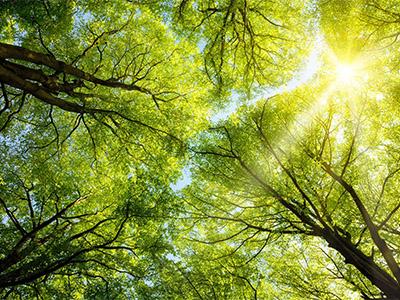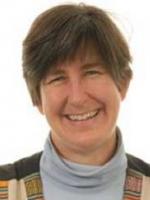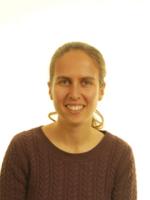Introduction
The benefits to wellbeing of engagement with natural environments are well recognised and supported by global literature. Within policy and practice there is increasingly a ‘taken as given’ perspective that increased use of, and engagement with, the natural environment can promote such wellbeing. Scotland’s landscapes represent a wealth of natural capital for human wellbeing, and social values associated with these landscapes include goods relating to e.g. recreation/tourism, health/wellbeing, belongingness, education/environmental literacy, place- and cultural- identity, cultural heritage, inspiration and spiritual fulfilment. There are, however, persistent and emerging questions around equality of outdoor access, how to foster engagement and connection with the natural environment, and how characteristics of the environmental setting might influence these factors. Such insight can inform development and implementation of policy and practical programmes that deliver high quality environments for people and promote re-connection of people with place.

Aim of Research
The aim of the research within this RD is to improve understanding of issues around (re-) engagement of people with Scotland’s landscapes and natural environment. There are three key objectives set out for the research:
- Developing and applying a framework for understanding access to and engagement with natural landscapes
- Understanding opportunities to facilitate (re-)engagement with the land
- Examining linkages between environmental qualities and wellbeing
Progress
2021 / 2022
In the final year of the Strategic Research Programme, researchers in this deliverable conducted a rapid review to identify knowledge gaps about barriers to use by different groups within Scotland’s population. We examined academic and non-academic literature from Scotland and the UK for the following groups: minority ethnic, women and men, disabled people, children and young people, those aged over 65, religious groups and socioeconomic groups. These groups were selected as relevant to the Scottish Government in assessing the equalities impacts of outdoor access policies.
The review identified significant evidence gaps around barriers to use of the outdoors experienced by minority ethnic and religious groups. Many barriers cut across groups, although they may be experienced differently by people within different sub-groups. This includes poor health and immobility, lack of social networks, safety concerns, knowledge and familiarity. We identified the need for research incorporating intersectional data in Scotland and suggest a need for studies looking both within certain groups and comparing between different groups. Findings were published on SEFARI and researchers will give a presentation as part of the RESAS Scottish Government seminar series in July 2022.
Researchers also completed synthesis of findings from the case studies and across the portfolio of work within this deliverable for publication and dissemination. These focused on barriers to nature engagement, wellbeing and rural landscapes, greenspace and mental health, and nature-based interventions as mechanisms to foster social wellbeing.
2020 / 2021
This year focused on final analyses of data and integration of findings from our case studies conducted in the Cairngorms and Cumbernauld as well as the large-scale greenspace recreation survey. These informed understanding of capabilities for nature-engagement and informed the refinement of the framework to understand how people can be helped to access outdoor environments more effectively. A re-analysis of interview data provided insight on group outdoor health walks, social wellbeing and mitigating social isolation.
An evaluation report was submitted to Cumbernauld Living Landscape’s Creating Natural Connections as part of our contribution to the monitoring and evaluation of the project’s impact on community engagement with nature for wellbeing and nature conservation. Several manuscripts were developed focusing on barriers to nature engagement, wellbeing and rural landscapes, greenspace and mental health, and nature-based interventions as mechanisms to promote nature-engagement capabilities and foster social wellbeing. A presentation was provided to RESAS on a novel biodiversity-health framework. A report on conducting research into use of outdoors by ethnic minority groups (from Year 4) was shared with NatureScot.
Highlight
The team led or contributed to peer-reviewed papers drawing on case study findings and collaborations with external researchers established through work within the RD. These articles focused on nature engagement and health/wellbeing through nature-based programmes, green/blue biodiverse spaces and wellbeing, motivations for involvement in citizen science, the development of relational care for nature, socially inclusive green infrastructure, and an agenda setting biodiversity-health framework.
2019 / 2020
Fieldwork for the two remaining case studies to investigate nature-based programmes for engagement with nature and wellbeing was completed. These case studies focus on engagement for older people who reside in the rural landscapes of the Cairngorms National Park and for community members living in the peri-urban landscapes of Cumbernauld. The RD lead contributed to two peer-reviewed papers – one that develops a typology of nature-based health interventions and one that empirically investigates a pilot programme utilising wetland landscape for management of anxiety and depression.
A largescale survey (in collaboration with RD1.4.1) on greenspace recreation was also conducted. This incorporated the capabilities measurement tool that was used in one of the case studies and allows for large-scale testing of the tool. Findings from the case studies and the survey will inform the refinement of the framework to understand how people can be helped to access outdoor environments more effectively.
The edited peer-reviewed open-access book focusing on biodiversity and public health in the face of climate change was published. Chapters examine the linkages between biodiversity and various dimensions of health/wellbeing (e.g. physical, mental, spiritual) and implications for policy and practice.
2018 / 2019
A final report and a research summary from our research investigating disparities in outdoor recreation participation rates across adult population groups in Scotland were published. Findings highlighted key population groups that were significantly less likely to report using the outdoors on a weekly basis. These were presented to Scottish Government colleagues from across policy sectors (e.g. transport, health and social care, natural resources, early learning and childcare) as part of our knowledge exchange objective. Findings were presented at a scientific conference. A manuscript has been submitted for publication in the peer-reviewed literature.
We completed our case study focused on the feasibility of undertaking research into barriers to outdoor use faced by ethnic minority groups. Interviews were completed for the Cairngorms-based case study of a nature-based intervention that seeks to promote health and increase time outside for older people who reside in the park. These will be analysed alongside step-count and self-report health data from a 12-week group outdoor walking programme. A capabilities measurement tool was finalised for use our third case study in the peri-urban landscapes of Cumbernauld. This case study looks at development of capabilities for nature engagement amongst participants in programmes that seek to increase use and engagement with natural landscapes.
Work package researchers presented at the Central Scotland Green Network Annual Event on the healing power of greenspace and at the International Association for People-Environment Studies conference on social justice and access to natural environments. The RD lead contributed as editor and author to a forthcoming book from Springer titled Biodiversity and Public Health in the Face of Climate Change. Additional activities included contribution to a consultation on the Draft Scottish Environment Strategy.
Highlights:
- Key population groups use outdoors less frequently: A new report and research note identifies disparities in use of the outdoors for recreation across equality groups in Scotland.
2017 / 2018
During the second year, we further developed the ‘Capabilities for Nature Engagement’ framework, refined through consultations with stakeholders and guided by the desk-review during year 1. We derived a tool for measuring an individual’s capabilities for engaging with the natural environment including cognitive (e.g. I know how to get to my local greenspace) and emotional (e.g. looking after wildlife and habitats is something I care about) capabilities. The suitability of the framework and tool will be refined through field-based case study research.
Several strands of work continued to explore inequalities in access to and engagement with natural landscapes. Analysis of Scottish Household Survey data was completed with a draft final report written. We undertook further analysis of interview data about barriers that older people face in accessing outdoor recreation opportunities to examine the interlinkages of such barriers and possible interventions to overcome these barriers. This was submitted for academic publication.
A research manuscript focusing on recreational use of outdoors at different stages of one’s life (e.g. as a child, when first married) was accepted for publication. This article investigates outdoor recreational patterns across the life course. It identifies ways in which childhood experiences shape adult engagement and highlights key transition points at which outdoor use behaviour shifts.
We held a knowledge exchange workshop with relevant stakeholders from across policy, practice and research. The event provided an overview of research conducted to date and presented for discussion potential options for case study research due to begin in Year 3. Work package researchers presented at several conferences: the Scottish Public Health Conference, the European conference on Biodiversity and Health in the Face of Climate Change, and the international conference on Transformations in Practice. The presentations focused on evaluation of nature-based programmes that seek to promote health and wellbeing. The team contributed to a Scottish Government call for evidence on greenspace.
Highlights:
- Key transition points in life shape use of outdoors: A new paper identifies key “moments of change” – getting married, becoming a parent, children entering adolescence, retirement, the onset of disabilities or ill health, death of others – that shape outdoor recreation highlighting potential for targeted interventions to increase outdoor recreation throughout life.
2016 / 2017
Our first year focused on laying the conceptual and practical groundwork for the field-based research to be undertaken in subsequent years of the programme. We began development of a framework for understanding the factors that shape people’s engagement with natural landscapes. This was done through a desk-based review of literature across behaviour change, capabilities and greenspace use and consultation with stakeholders. The framework will be used to inform, and will be refined by, our research.
To investigate current use patterns of the outdoors and potential disparities in such use across different groups in Scotland, we undertook preliminary statistical analysis of existing population representative survey data (drawn from the Scottish Household Survey). An interim report was circulated to relevant stakeholders for comment and input on direction for further analyses in year two.
Potential case study sites, research methods and opportunities for linkages with other RESAS work packages were identified.
Knowledge exchange and dissemination also featured. We held a workshop (with Scottish Natural Heritage) with relevant policy and practitioner stakeholders to provide an overview and discuss the current state-of-play for nature-health initiatives and research in Scotland. We developed a manuscript for a scientific audience focused on use of outdoors at different stages of one’s life (e.g. as a child, when first married). RD researchers presented at the Scottish Biodiversity Conference and the Scotland Policy Conferences Keynote Seminar; The RD lead was invited to serve on Scottish Natural Heritage's Research Advisory committee for Our Natural Health Service initiative. Research on barriers to outdoor use by older people and the possibilities for ‘green/nature’ prescriptions received extensive media interest.
Highlights:
- Knowledge exchange activity:
- Coverage of research on barriers to outdoor use by older people and the idea of ‘green / nature prescriptions’ by close to 60 local, regional and national media including: BBC One’s Breakfast; BBC Radio; Scotland’s Good Morning; Scotland BBC News website; The Sun; Daily Mail; The Scotsman; The National; The Herald; The Courier; The Press & Journal. Articles also appeared in The People’s Friend, Holyrood magazine and Countryside Journal. Estimated audience of nearly 4 million with a total value of £88,000.
- A policy-focused invited talk about barriers to outdoor use was given at the Scotland Policy Conferences Keynote Seminar: Next steps for environmental policy in Scotland - natural capital, biodiversity and delivering sustainable economic growth (March 2017).
Future Activities
The new Strategic Research Programme 2022-27 will build on the work undertaken by the research team under the ‘Human impacts on the Environment’ theme. The research project, titled ‘Reciprocal Care for Nature and Wellbeing’, sits within the ‘Use of the Outdoors and Greenspace’ topic. Over the course of five years the project will extend develop indicators of greenspace quality, undertake a longitudinal study of young people's engagement with the natural environment using a life course lens (developed in the 2016-2022 programme), and use novel methodologies (inspired by the 2016-2022 programme) to investigate how nature engagement capabilities and responsible use of the outdoors can be developed and deepened amongst different population sub-groups.
Selected Outputs
2016/17
- The science, policy and practice of nature-based solutions: An interdisciplinary perspective. (2017) – paper published in Science of the Total Environment, by Castern Nesshöver et al.
2017/18
- Exploring Landscape Engagement through a Participatory Touch Table Approach (2017) – paper published in Social Sciences, by Anna Conniff et al.
- Then and now: Examining older people’s engagement in outdoor recreation across the life course. (2017) – paper published in Leisure Science by Kathryn Colley et al.
- Katherine N Irvine, Kathryn Colley and Margaret Currie (2018) Capabilities for engagement with landscapes for wellbeing. RESAS RD 3.4.3 Working Paper, 31 March 2018. Unpublished
2018/19
- Final report on ‘Investigating use of the outdoors across adult population groups in Scotland’ to the Scottish Government as part of RESAS Strategic Research Programme by Kathryn Colley and Katherine N Irvine (2018).
- Research Summary Disparities in use of the outdoors across equality groups in Scotland. submitted to Scottish Government as part of RESAS Strategic Research Programme by Kathryn Colley and Katherine N Irvine (2018).
- Biodiversity, and Health in the Face of Climate Change. (2019) Book published by Springer, The Netherlands and edited by Melissa R Marselle et al.
2019/20
- Wetlands for wellbeing: piloting a nature-based health intervention for the management of anxiety and depression. (2019) – paper published in the International Journal of Environmental Research and Public Health by Phoebe R Maund et al.
- Nature-based interventions for improving health and wellbeing: the purpose, the people and the outcomes (2019) – paper published in Sports by Danielle F Shanahan et al.
- Mags Currie, Kathryn Colley, Katherine N Irvine (2019). Ethnic Minorities Pilot Project Report. RESAS RD 3.4.3 Working Paper, 31 March 2019. Unpublished.
2020/21
Academic papers
- Group outdoor health walks using activity trackers: measurement and implementation insight from a mixed methods feasibility study (2020) – paper published in International Journal of Environmental Research and Public Health by Irvine et al.
- What motivates the masses: understanding why people contribute to conservation citizen science projects (2020) – paper published in Biological Conservation by Maund et al.
- Pathways linking biodiversity to human health: A conceptual framework (2021) – paper published in Environment International by Marselle et al.
- Perceived biodiversity, sound, naturalness and safety enhance the restorative quality and wellbeing benefits of green and blue space in a neotropical city (2021) – paper published in Science of The Total Environment by Fisher et al.
- Digging deeper: Gardening as a way to develop non-human relationships through connection with Nature (2021) – paper published in European Journal of Ecopsychology by Bell-Williams et al.
Reports
- Report titled “Monitoring outcomes of Cumbernuald Living Landscape volunteer projects” using novel measures for understanding capabilities for engagement with nature submitted to Cumbernauld Living Landscape partnership to inform mid-project evaluation. Unpublished.
Conference Presentations
- A presentation on "A Feasibility Study of Forest Bathing” was given to an international conference on people-environment relationships.
- A presentation on “Evaluating Group Outdoor Health Walks” using novel measures was given at an international conference on integrative medicine.
2020/21
Academic papers
- Who benefits from nature? Inequalities in outdoor activity in Scotland and the gender gap outdoors – paper published in Land Use and Urban Planning by Kathryn Colley et al
- Outdoor Recreation for Older Adults in Scotland: Qualitatively Exploring the Multiplicity of Constraints to Participation – paper published in International Journal of Environmental Research and Public Health by Margaret Currie et al
- Social isolation in older adults: A qualitative study on the social dimensions of group outdoor health walks – paper published in International Journal of Environmental Research and Public Health by Irvine et al
- Associations between greenspace and mental health prescription rates in urban areas – paper published in Urban Forestry & Urban Greening by Michaela Roberts et al
Book chapter
- Outdoor recreation and the wellbeing of older residents – chapter published in Rural Quality of Life by Kathryn Colley, Margaret Currie and Katherine N Irvine
Blog and slide pack
Addressing inequality in outdoor use and unpacking the barriers
Review of barriers to use of the outdoors for equalities groups



